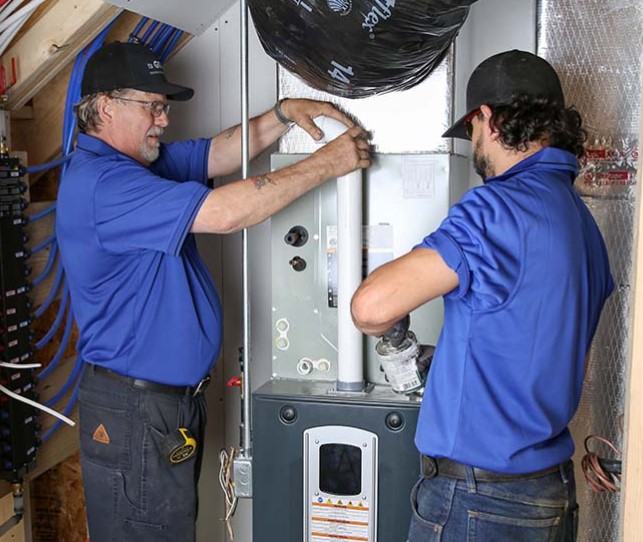Heating season is a critical time for homeowners when it comes to achieving ideal indoor temps. It also presents a unique opportunity for your business to strategically get ahead of customers’ comfort needs.
A recent Trane survey found that most homeowners aren’t taking the appropriate steps to prevent an HVAC breakdown, like scheduling bi-annual professional service checks, nor are they familiar with the average lifespan of their unit. And with so many systems out there, knowing the “right” solution can be a daunting decision.
As a seasoned HVAC professional, you can leverage your industry expertise to help homeowners determine the best heating plan and help them stay warm and toasty while ensuring long term cost- and energy-savings.

Here are four tips to help you with your heating season approach:
PROACTIVITY IS KEY TO MAINTAINING TOP-OF-MIND STATUS
First things first – it’s imperative to proactively reach out to current and prospective customers before the temperature drops to maintain a “top-of-mind” advantage. Whether sharing a seasonal maintenance reminder via a flyer or an email newsletter, or simply making house calls to offer a discount deal on a service check, these are great ways to remind homeowners to schedule a professional inspection.
TO REPLACE OR REPAIR? IDENTIFY THE PROBLEM FIRST
Once a seasonal maintenance inspection is booked, you should determine if a repair or a complete replacement of the homeowner’s current system is in order. Start by performing an initial assessment of their comfort priorities. Inquire about:
• Age of the current system – If the system was installed before 2006, it’s probably time to replace;
• Inconsistencies experienced in reaching a desired set point – The system might not be large enough or no longer capable of meeting the outdoor temperature demands;
• Concerns with indoor air quality – Are they allergy-prone or asthma suffers or have pets that produce large amounts of hair?
Answers to these questions will help draw conclusions about the lifespan of the system and the homeowner’s specific needs based on square footage, the climate zone, the quality of home insulation and so on.
Should you ultimately find that the system is not functioning properly, it’s crucial to walk the homeowner through their choices – from the estimated cost to repair to whether a new system could be a better financial move.
By following the “$5,000 rule,” you can offer your professional recommendation: Take the age of the equipment and multiply it by the estimated repair cost. If the number is more than $5,000, then suggest replacing the unit, which can turn into a fantastic opportunity to offer new products.
CONSIDER THE CUSTOMER’S SHORT- AND LONG-TERM GOALS
Once determining that replacement is the best path, take the opportunity to better understand the customer’s short- and long-term goals for home comfort.
Explore options with upgrades to save energy and provide additional benefits like cleaner air in the home. If they want a system that reduces energy consumption, requires less maintenance and has a long lifespan, consider offering a model like Trane’s XC95m gas furnace. For those who live in milder climate, a heat pump like Trane’s XR15 might be the preferred course of action. No matter the climate, a Trane CleanEffects whole home air cleaner could be in order to help address dust, pet dander and other pollutants trapped inside the home.
LASTLY, BE RESPONSE READY
While a technician’s proactive outreach is imperative, it’s equally as essential to make sure your team is response-ready for emergency care. Be the go-to source when a homeowner’s system suddenly breaks down, and you can become their trusted technician. No one appreciates you more in a time of need than when you’re able to help in a last-minute or near-crisis situation. Those are relationship-building moments that increase customer loyalty and can lead to a future service, repair or even replacement.
By Scott Ewald, brand manager for Trane Residential
Retrieved online from www.achrnews.com, October 1, 2019


